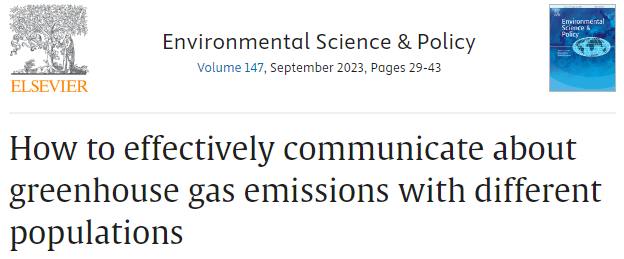Bobin Wang , E.O.D. Waygood , Xun Ji , Hamed Naseri , Alex L. Loiselle , Ricardo A. Daziano , Zachary Patterson , Matthew Feinberg
Abstract
A critical aspect of climate policy is effective communication about greenhouse gas emissions (GHG-E) themselves. However, since attitudes towards climate change vary by different segments of the population, different methods of communication about GHG-E may be necessary. This study investigates different responses to GHG-E information by population and how to best communicate such information with them. Eight framing techniques following goal framing theory and moral foundations theory were developed, and a discrete choice experiment was applied to determine willingness to pay (WTP) for CO2 emissions reductions. Six segmentation analyses for people’s WTP for emissions under different framing techniques were carried out for culture, region, urban-rural residence, political leaning, attitudes and beliefs towards climate change, and income. Based on the data of 2015 respondents from six provinces of Canada, the strength of GHG information influence was tested according to different respondent segmentations. The results show that in most cases, an emoticon framing has the strongest influence, though two exceptions exist: With respect to political orientation, nearly all framings were ineffective for those on the extremes, and for those on the right (not extreme) the current label has the largest impact; With respect to climate change motivation, color framing works best for those unsure how to reduce emissions, while the current label works for those uninterested in reducing their emissions. Surprisingly, “tree” framing was most effective among those who report not being concerned about climate change. The results help policy and decision-makers improve the likelihood of climate-friendly choices being made.
